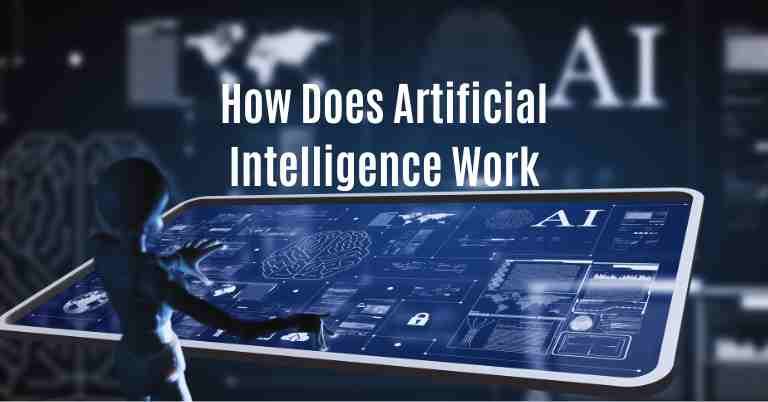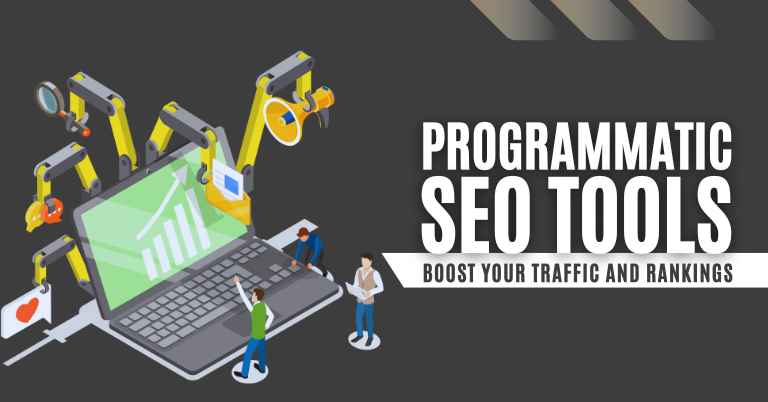Artificial intelligence works by using computer algorithms to imitate human intelligence and perform tasks like reasoning, learning, and problem-solving autonomously. In recent years, AI has made significant advancements in various fields, ranging from self-driving cars to voice recognition systems.
With the ability to process vast amounts of data and learn from patterns, AI systems can now accurately interpret and respond to complex tasks, often surpassing human capabilities. As a result, businesses and industries worldwide are utilizing AI technology to optimize operations, improve efficiency, and enhance customer experience.
We will explore how artificial intelligence works and the various applications it has in today’s world.
Let's See the Topic Overview
Understanding Artificial Intelligence
Artificial intelligence (ai) is a fascinating field that continues to revolutionize various industries. From virtual assistants like Siri and alexa to self-driving cars, AI has become an integral part of our daily lives. But how does it actually work? In this section, we will delve into the concept of AI, its history, and its evolution.
Defining Artificial Intelligence
Artificial intelligence refers to the ability of computer systems to perform tasks that would typically require human intelligence. It involves simulating human-like intelligence in machines, enabling them to learn, reason, and make decisions on their own. Here are some key points to understand about AI:
- Ai can be categorized into two types: Narrow ai and general ai. Narrow ai is designed to perform specific tasks, such as voice recognition or image classification, while general ai aims to mimic human intelligence across a broad range of activities.
- Machine learning, a subset of ai, enables computers to learn from experience and improve their performance without explicit programming. It helps systems identify patterns and make predictions based on data.
- Deep learning is a more advanced form of machine learning that utilizes artificial neural networks to process large amounts of data and draw conclusions. It has been instrumental in advancements in areas like image and speech recognition.
History And Evolution Of Ai
Ai has a rich history that dates back to the mid-20th century. Here are some significant milestones in the evolution of ai:
- The birth of ai can be traced back to the dartmouth conference in 1956, where the term “artificial intelligence” was coined. This event marked the beginning of ai as a distinct field of study.
- In the 1960s and 1970s, ai research was focused on developing rule-based systems that could mimic human thinking and problem-solving. However, progress was slowed due to limitations in computation power and data availability.
- The 1980s and 1990s brought about a shift towards statistical approaches, as researchers began to explore machine learning techniques. This period saw the development of expert systems and the emergence of ai applications in areas like speech recognition and robotics.
- With the advent of big data and advancements in computing power in the 21st century, ai has witnessed significant growth. Breakthroughs in deep learning, fueled by the availability of massive datasets, have led to remarkable achievements in areas like autonomous vehicles and natural language processing.
Understanding the underlying principles and evolution of ai allows us to appreciate its potential and the impact it has on our lives. As ai continues to evolve, it holds the promise of transforming industries, improving efficiency, and facilitating innovation.
Ai Basics
Artificial intelligence (ai) has become an integral part of our lives, from voice assistants like siri to recommendation algorithms on social media platforms. But have you ever wondered how ai actually works? In this section, we’ll explore the basics of ai, including different types of ai systems and the concept of machine learning.
Types Of Artificial Intelligence Systems
There are various types of artificial intelligence systems, each designed to perform different tasks. Here are the key types you should know about:
- Reactive ai: These systems do not have memory and make decisions solely based on the current situation. They do not consider past experiences or future consequences.
- Limited memory ai: Unlike reactive systems, limited memory ai can use past experiences to make decisions. They can remember certain information for a limited period, which enhances their decision-making capabilities.
- Theory of mind ai: This type of ai is yet to be fully developed but aims to create systems that can understand human emotions, intentions, and beliefs. Theory of mind ai would be able to interact with people in a more natural and intuitive way.
- Self-aware ai: The concept of self-aware ai refers to systems that have not yet been achieved. This level of ai would possess self-consciousness and be aware of its own existence and actions.
Machine Learning And Deep Learning
Machine learning is a subset of ai that involves developing algorithms capable of learning from data and making predictions or taking actions without being explicitly programmed. Deep learning, on the other hand, is a subfield of machine learning that focuses on training artificial neural networks with multiple layers to perform more complex tasks.
- Supervised learning: In supervised learning, a labeled dataset is provided to the algorithm, allowing it to learn from the input-output pairs. The algorithm aims to find patterns and relationships in the data to make predictions on new, unseen data.
- Unsupervised learning: Unlike supervised learning, unsupervised learning deals with unlabeled data. The algorithm explores the data to find patterns, group similar data points, and gain insights from the underlying structure of the data.
- Reinforcement learning: Reinforcement learning involves an agent that learns by interacting with an environment. The agent takes actions and receives feedback in the form of rewards or penalties, enabling it to learn the optimal actions in different situations.
Understanding the basics of artificial intelligence, including the different types of ai systems and the concepts of machine learning and deep learning, provides a glimpse into the inner workings of this transformative technology. Ai is continuously evolving, bringing advancements and opportunities across various industries.
As our understanding of ai deepens, so does the potential for innovation and the integration of ai into diverse aspects of our lives.
The Neural Networks Behind Ai
Artificial intelligence (ai) has taken the world by storm, revolutionizing various industries and enhancing our everyday lives. But have you ever wondered how it all works? At the heart of ai lies neural networks, which serve as the building blocks of this fascinating technology.
In this section, we will delve into the complexities of neural networks and explore their profound role in artificial intelligence.
Introduction To Neural Networks
Neural networks are computer systems designed to replicate and simulate the intricate functions of the human brain. These networks consist of interconnected nodes, known as artificial neurons, that work collaboratively to process and analyze vast amounts of information. Here are the key points to understand about neural networks:
- Neural networks mimic the connections of biological neurons within the human brain.
- Each artificial neuron receives input from multiple sources and computes the data to produce an output.
- The strength of connection between neurons, also known as weights, determines the significance of the information being processed.
- Neural networks are highly adaptable and capable of learning from experience, making them an essential component of ai systems.
Structure And Function Of Artificial Neurons
Artificial neurons serve as fundamental units within neural networks, emulating the behavior of biological neurons. Here’s what you need to know about their structure and function:
- Each artificial neuron consists of three main components: Inputs, weights, and an activation function.
- Inputs represent the data received from other connected neurons or external sources.
- Weights determine the importance or influence of each input on the neuron’s output.
- The activation function determines whether the neuron will fire and transmit information to subsequent neurons.
- Artificial neurons process inputs by multiplying them with corresponding weights, aggregating the results, and applying the activation function.
Training And Optimization Of Neural Networks
Training neural networks involves optimizing their performance by adjusting the weights between neurons. Let’s take a closer look at this crucial aspect of neural network development:
- During the training phase, data is fed into the neural network, and the weights are adjusted iteratively to minimize errors.
- The algorithm used for training varies depending on the desired outcome, such as supervised learning, unsupervised learning, or reinforcement learning.
- Supervised learning involves providing labeled data to the network and modifying the weights based on the comparison between predicted and actual outputs.
- Unsupervised learning allows the network to discover patterns and relationships within the data without the need for labels.
- Reinforcement learning employs a reward-based system, where the network learns through positive reinforcement for desirable behaviors.
Training and optimizing neural networks is a complex process that requires expertise and careful evaluation to achieve accurate and reliable ai systems.
Neural networks form the backbone of artificial intelligence, acting as a bridge between vast amounts of data and actionable insights. By emulating the functions of the human brain, these networks enable machines to learn, adapt, and make decisions. As our understanding of neural networks advances, so too does the potential for ai to reshape industries and drive innovation.
Ai Algorithms And Models
Artificial intelligence (ai) is a rapidly advancing field that aims to develop intelligent machines capable of performing tasks that typically require human intelligence. At the heart of ai lie algorithms and models, which are the building blocks that enable machines to process information, learn from data, and make intelligent decisions.
In this section, we will explore some of the common ai algorithms and their applications.
Common Ai Algorithms And Their Applications
- Decision trees and random forests:
- Decision trees are tree-like structures that make sequential decisions based on certain conditions. They are widely used in classification and regression tasks, such as predicting customer preferences or determining the likelihood of a disease.
- Random forests are ensembles of decision trees that combine their individual predictions to make a more accurate and robust final decision. They are commonly used for tasks like image classification, fraud detection, and stock market analysis.
- Support vector machines and clustering algorithms:
- Support vector machines (svm) are supervised learning models that analyze data and classify it into different categories. They are effective in solving both linear and non-linear classification problems. Svms find applications in areas such as text classification, image recognition, and gene expression analysis.
- Clustering algorithms group similar data points together based on their characteristics. They are valuable tools for pattern recognition, customer segmentation, and anomaly detection. Some popular clustering algorithms include k-means, dbscan, and hierarchical clustering.
Ai algorithms and models form the backbone of artificial intelligence systems. Decision trees and random forests provide a structured approach to decision-making, while support vector machines and clustering algorithms aid in classification and data grouping tasks. The versatility and applicability of these algorithms make them crucial components in various industries and domains.
By understanding how these algorithms work, we can leverage their power to create intelligent systems that continue to push the boundaries of what ai can achieve.
Natural Language Processing (NLP)
Natural language processing (nlp) is a fascinating area of artificial intelligence that focuses on understanding and processing human language. Through the use of algorithms and computational linguistics, machines can analyze and interpret text and speech, enabling them to communicate with humans more effectively than ever before.
In this section, we will explore the key aspects of NLP, including text processing and language modeling, as well as sentiment analysis and text classification.
Overview Of Natural Language Processing
- Nlp is a branch of ai that involves the interaction between computers and human languages.
- Its primary goal is to enable machines to understand, interpret, and generate human language.
- Nlp encompasses various techniques, such as text analysis, speech recognition, and language translation.
- Through nlp, machines can “comprehend” the meaning behind words, sentences, and even entire documents.
Text Processing And Language Modeling
- Text processing involves transforming raw text into structured and meaningful data.
- It includes tasks like tokenization, where sentences are broken down into individual words or phrases.
- Language modeling focuses on predicting the next word in a sentence or generating coherent text.
- Techniques like n-grams, recurrent neural networks (rnns), and transformers contribute to the development of language models.
- Language models are used in various applications, including speech recognition, chatbots, and machine translation.
Sentiment Analysis And Text Classification
- Sentiment analysis aims to determine the sentiment expressed in a piece of text, whether it is positive, negative, or neutral.
- Machines use nlp techniques to analyze the context, tone, and emotion behind words to assess sentiment accurately.
- Text classification involves categorizing text into predefined classes or categories.
- It helps machines understand the topic, intent, or relevance of a given piece of text.
- Techniques like naive bayes, support vector machines (svm), and deep learning models are employed for text classification tasks.
Natural language processing plays a crucial role in enabling machines to effectively understand and interact with human language. Through text processing and language modeling, machines can derive meaning and generate coherent text. Sentiment analysis and text classification further enhance the capabilities of nlp, allowing machines to assess sentiment and categorize text accurately.
With ongoing advancements in ai, nlp continues to make significant strides in facilitating human-computer communication.
Computer Vision And Image Recognition
Artificial intelligence (ai) has revolutionized various industries, and computer vision has emerged as a powerful application within the field. Through image recognition and object detection, ai systems can process and interpret visual data, enabling machines to “see” and understand the world around them.
Let’s delve deeper into the fascinating world of computer vision and explore the key aspects of image recognition and object detection.
Application Of Ai In Computer Vision
Computer vision is the field of ai that focuses on enabling computers to understand and interpret visual data, such as images and videos. By leveraging ai techniques, computer vision systems have found their way into numerous domains, including autonomous vehicles, surveillance systems, quality control in manufacturing, healthcare diagnostics, and more.
Ai-powered computer vision plays a crucial role in enabling machines to perceive and analyze visual information just as humans do. Here are some of the key applications of ai in computer vision:
- Autonomous vehicles: Ai systems equipped with computer vision capabilities help self-driving cars navigate and make informed decisions based on real-time data from their surroundings.
- Healthcare: Computer vision assists doctors in diagnosing medical conditions by analyzing medical images like x-rays, mri scans, and ct scans. It can detect anomalies, identify diseases, and provide valuable insights.
- Augmented reality (ar): Ar applications rely on computer vision to overlay digital information onto the real-world environment, enhancing user experiences in sectors like gaming, design, and retail.
- Robotics: Computer vision allows robots to perceive and interact with their environments effectively. It enables robots to identify objects, navigate through obstacles, and perform complex tasks safely.
Image Recognition And Object Detection
Image recognition and object detection are two fundamental components of computer vision that fuel ai systems’ ability to analyze and understand visual data. Let’s take a closer look at each of them:
- Image recognition: Image recognition involves the identification and classification of objects or patterns within an image. Ai models are trained to recognize specific features or objects within images accurately. Examples of image recognition include facial recognition used for authentication purposes, detecting specific objects like dogs, cars, or buildings in images.
- Object detection: Object detection takes image recognition a step further by not only identifying objects but also locating and outlining them within an image. This allows the ai system to detect multiple objects within an image and identify their precise positions. Object detection finds applications in various use cases, ranging from security surveillance to self-driving cars, where identifying and tracking multiple objects in real-time is crucial.
To accomplish image recognition and object detection tasks, deep learning models are widely used. These models, such as convolutional neural networks (cnns), are designed to process visual data and extract meaningful features from images. By training these models on vast datasets, they can recognize patterns and objects accurately.
Computer vision and image recognition are vital aspects of ai that allow machines to perceive and understand the visual world. Through advancements in deep learning models, ai systems continue to evolve, enabling them to interpret and analyze visual data with remarkable accuracy.
With ongoing advancements, the applications of computer vision are poised to transform industries and shape the way we interact with machines in the years to come.
Robotics And Ai
The Integration Of Ai And Robotics
Artificial intelligence (ai) and robotics have become inseparable entities in today’s technologically advanced world. The integration of ai and robotics has revolutionized various industries, leading to groundbreaking advancements and applications. In this section, we will explore how ai and robotics work hand in hand, transforming industries and shaping the future.
- Ai-enabled robots can mimic human-like intelligence and perform tasks autonomously and efficiently.
- They can perceive their surroundings using sensors and cameras, allowing them to navigate and interact with the environment.
- Robotic arms equipped with ai algorithms can perform intricate tasks with precision and accuracy, revolutionizing manufacturing processes.
- The integration of ai and robotics has led to the development of collaborative robots or cobots, which can work alongside humans, enhancing productivity and safety.
- Ai algorithms enable robots to learn from data and make intelligent decisions, enabling them to adapt to changing scenarios and optimize their performance.
Applications Of Robotics In Various Industries
The application of robotics spans across a wide range of industries, revolutionizing operations, and transforming the way tasks are performed. Here are some key applications of robotics in various sectors:
Healthcare Industry:
- Surgical robots assist surgeons in performing complex procedures with precision, minimizing invasiveness and enhancing patient outcomes.
- Robots equipped with ai algorithms can analyze medical data, aiding in diagnosis, treatment planning, and drug discovery.
- Robotic exoskeletons assist individuals with mobility impairments, enabling them to regain freedom and independence.
Manufacturing Industry:
- Robots automate repetitive and labor-intensive tasks, increasing production efficiency and reducing human error.
- Ai-powered robots can learn from data, optimize processes, and improve overall productivity.
- Collaborative robots work alongside human workers, enhancing safety and supporting intricate assembly tasks.
Logistics And Warehousing:
- Robots automate order fulfillment, inventory management, and packing processes, enabling faster and more accurate order processing.
- Autonomous drones and self-driving vehicles streamline logistics operations, ensuring optimized delivery routes and reducing costs.
- Ai-powered robots assist in material handling, sorting, and organizing products in warehouses.
Future Prospects And Advancements
The integration of ai and robotics shows promising prospects for future advancements, fueling innovation and pushing boundaries. Here are some areas that hold immense potential:
- Advancements in machine learning and ai algorithms will lead to robots with enhanced perception, cognition, and decision-making capabilities.
- The development of soft robotics and bio-inspired robots will enable more delicate and versatile interactions with humans and the environment.
- Ai-enabled robots will find applications in hazardous environments, such as deep-sea exploration, space missions, and disaster response.
- The use of ai and robotics in agriculture will revolutionize farming practices, improving crop yield, and optimizing resource utilization.
- Collaborative robots will continue to evolve, becoming more intuitive, adaptable, and capable of seamlessly working alongside humans.
As technology continues to advance at a rapid pace, the integration of ai and robotics will undoubtedly shape and redefine various industries, opening up new possibilities and transforming the way we live and work. Embracing these advancements will pave the way for a future where humans and machines collaborate to achieve unprecedented levels of efficiency and innovation.
Ethics And Challenges In Ai
Artificial intelligence (ai) is revolutionizing various fields, from healthcare to business operations. It utilizes computer systems to perform tasks that traditionally required human intelligence. However, as ai progresses, several ethical considerations and challenges arise. In this section, we will explore key concerns surrounding ai development and its impact on society.
Ethical Considerations In Ai Development:
- Transparency: It is crucial to ensure that ai systems are transparent and explainable. Transparency enables users to understand the decision-making process of ai algorithms and provides insights into their recommendations or actions.
- Privacy: As ai collects and analyzes vast amounts of data, protecting privacy becomes an ethical concern. Safeguarding individuals’ personal information is necessary to prevent misuse or unauthorized access.
- Accountability: Establishing accountability for ai systems is essential. Identifying who is responsible for the actions or decisions made by ai algorithms is crucial when failures occur or unethical practices emerge.
- Data bias: Ai algorithms trained on biased data may perpetuate and amplify societal biases. Addressing data bias is crucial for fair and equitable outcomes.
Bias And Fairness In Ai Algorithms:
- Implicit bias in training data: Ai algorithms can inadvertently learn and perpetuate biases present in the data they are trained on. For example, if historical hiring data is skewed towards a specific gender, the ai system might unknowingly favor applicants from that gender, perpetuating discrimination.
- Lack of diversity in ai development teams: Building diverse teams that develop ai systems helps mitigate biases. Incorporating diverse perspectives during the development process improves the fairness and accuracy of ai algorithms.
- Algorithmic transparency and fairness: Ensuring transparency and fairness in ai algorithms is paramount. Developers should regularly audit ai algorithms to identify and rectify biases, while also providing clear documentation on how algorithms make decisions.
Job Displacement And Societal Implications:
- Automation and job loss: Ai advancements often lead to automation, which can displace certain jobs. This raises concerns about unemployment rates and the need for reskilling or upskilling the workforce to adapt to new roles.
- Economic inequality: Ai could widen the wealth gap if the benefits are concentrated among a few, exacerbating existing disparities. Policymakers and technology leaders should work together to address this issue.
- Ethical decision-making by ai: As ai systems autonomously make decisions, ensuring ethical behavior becomes critical. Developing ethical guidelines for ai and creating mechanisms to enforce them will help regulate their actions and prevent potential harm.
Artificial intelligence presents tremendous opportunities, but it also poses ethical challenges. By addressing transparency, fairness, and socio-economic issues, we can harness the potential of ai while safeguarding its impact on society.
Conclusion
Artificial intelligence is revolutionizing the way we live and work. From self-driving cars to virtual voice assistants, ai is transforming industries and enhancing human capabilities. Understanding how ai works is crucial in harnessing its potential and addressing concerns surrounding its impact.
By simulating human intelligence through machine learning and deep learning algorithms, ai systems can analyze vast amounts of data, recognize patterns, and make intelligent decisions or predictions. Natural language processing allows ai to understand and interpret human language, enabling chatbots and virtual assistants to have meaningful conversations.
Computer vision enables ai to perceive and interpret visual information, enabling facial recognition and object detection. Reinforcement learning allows ai to learn from trial and error, improving performance over time. As ai continues to advance, it is essential to establish ethical and transparent practices to ensure its responsible use.
Ultimately, the future of ai holds great promise, and by understanding its inner workings, we can fully harness its potential to benefit society.












